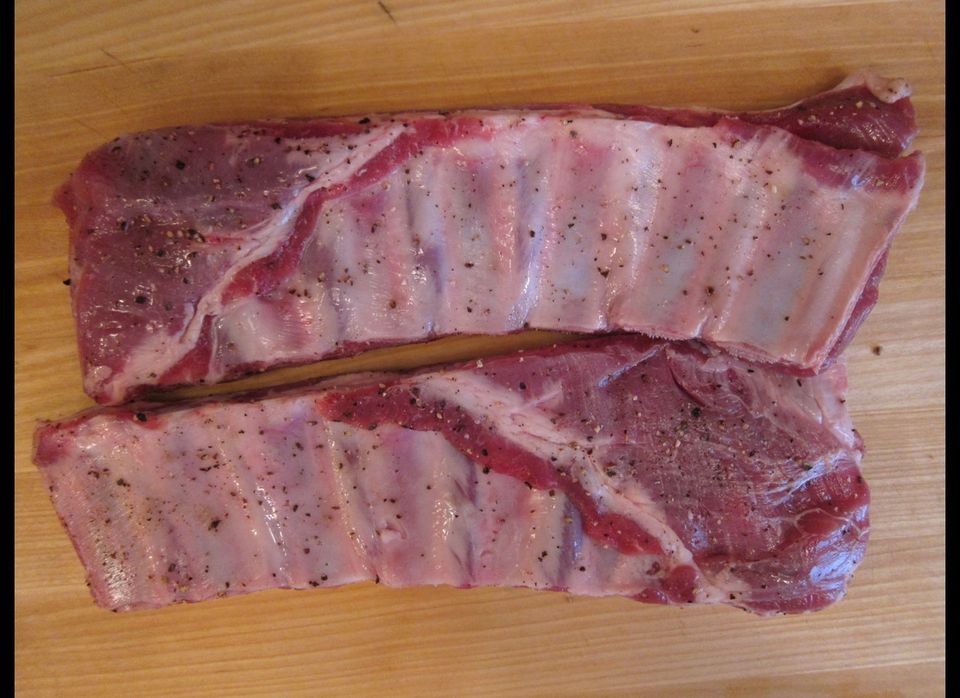The pleasure of a beautiful snowfall followed by a couple of brilliantly sunny sub-freezing days has given way to stay-at-home inertia: It is damp and gray and chilly outside. But indoors it is cozy, and the whole apartment smells of dinner: among the simplest of cold-weather dinners, too, and a surprisingly light one. Irish stew is what Jackie and I are smelling, something we haven't had in quite a while.
Jackie's history with this dish goes back to her student days in London, when she'd make a big pot of it (or of borshch) to last the better part of a week. In those years, the cheap cuts of lamb really were cheap. I remember buying breast of lamb for the equivalent of about seventy-five cents a pound in the 1970s -- and it was already boned, rolled around a tasty stuffing and ready for roasting.
In The Oxford Companion to Food, the late Alan Davidson warned that purists limit the ingredients of Irish stew to four: mutton (or kid), onions, potatoes and water. But he also allowed that additions such as carrots, turnips and barley are not unknown. They're certainly not unknown in my kitchen.
The grand thing about cooking Irish stew is how easy it is. No marinating, no browning, no deglazing with wine, no stock-making, no exotic ingredients. Here's how I made the one whose aroma teased us all afternoon: I took a pound and a quarter of lamb riblets (this is just a higher-end name for the nicer part of breast of lamb), cut between the bones to form individual segments and seasoned generously with salt and pepper. I cut the same weight of onions into 3/8-inch slices and placed these into a casserole, then added two big carrots and two not-so-big parsnips, peeled and cut into chunks -- all salted and peppered. On top went the lamb (I would have used my favorite braising cut -- neck -- but I bought breast before I knew the weather was going to be so Irish-stew-friendly; another good option would have been shoulder). I added water - just plain water - to barely cover, put the lid on the casserole, leaving it slightly ajar, and brought the stew up to a slow boil, checked for salt, then lowered the heat and left it to simmer for an hour. (When it reached temperature, I couldn't resist spooning away some of the scum that formed on the surface, but I'm sure that would be viewed as a fancy-pants affectation.)
At that one-hour point I added roughly a pound of potatoes cut into chunks and simmered the stew for another hour. A pound and a half or more wouldn't have been excessive, but I was trying to put some limit on the inevitable leftovers. (Traditionally, the potatoes would have been added at the beginning with a view to their partial disintegration into the broth, and you could certainly do that.)
The lamb was tender and succulent and pure of flavor. Likewise, the vegetables retained their character even after such long cooking. The broth was where everything came together: it was sweet from the onions and root vegetables, and rich and slightly viscous from the meat and its fat. No matter which elements you gather on your spoon or fork (you will probably want to have both within reach, because this is as much a soup as it is a stew), every mouthful will be delicious.
So, hooray for lousy weather, and hooray for Irish stew.
